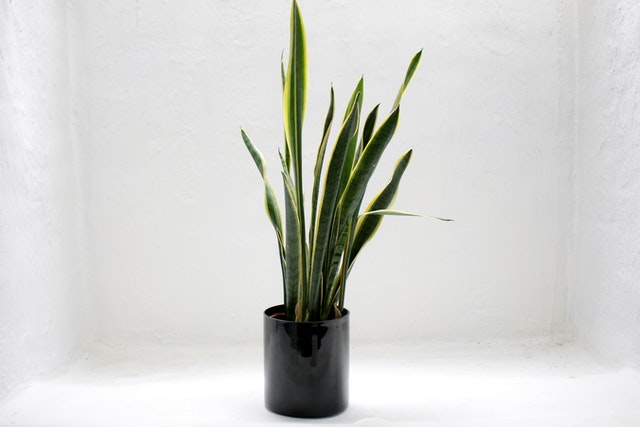Snake plants, also called mother-in-law’s tongues, are easy-to-care-for and give any space a nice, bright feel. They belong to the succulent family, which means they’re hardy, resilient, and drought-tolerant. They’re also known to be slow growers, which makes them great for beginners.
Still, many wonder, ‘How fast do snake plants grow?’ The short answer is anywhere between 4–12 inches per year. To give your snake plant the best chance to reach its full growth potential, be sure to place it in a location with plenty of indirect light and maintain regular waterings, but not so much that it causes the soil to become soggy Yet, there are a handful of factors that go into deciding the plant’s growth rate. So, keep reading to learn about this beautiful succulent and how you can add it to your gardening collection.
Let’s dive in.
How Fast Do Snake Plants Grow?

The snake plant was once classified as Sansevieria trifasciata. Then, in 2017, botanists noticed it had many characteristics in common with the Dracaena species. So, they switched it over, and it became known as the Dracaena trifasciata.
This succulent plant is one of the easiest plants to care for. Not only is it low-maintenance, but it also helps purify the air!
Also, because of their rich, vibrant colors, snake plants will make beautiful additions to your home and yard.
It features sword-like leaves that grow upright in a stiff manner with pointy tips. The most common snake plants are those that come in a deep shade of marbled green. Yet, some also feature a rich, yellow border.
So, how fast do snake plants grow?
The average growth rate for this plant is between four and 12 inches per year. This mostly depends on the species. For example, the slowest growing snake plant is the Golden Haahnii, which reaches a maximum height of 6 inches. On the flip side, the fastest growing species, Black Gold, can reach over 3 feet tall.
It also depends on whether they’re growing indoors or out. For example, as with most plants, outdoor snake plants will grow at a faster rate than their indoor counterparts. For one, they have more access to direct sunlight, which means more food production and, ultimately, faster growth.
Yet, don’t go putting all your snake plants outdoors just yet. There are things that can help make it grow faster.
Take a look.
1. Sunlight

Snake plants do well in areas that get full to partial sunlight. Yet, they can also thrive in low, indirect light.
In fact, it’s actually better if you avoid placing your snake plants in direct sunlight for extended periods because it can cause the leaves to burn. One recommendation is to keep them anywhere between 8–10 feet away from the window, especially if it’s south or west-facing.
We should also mention that they’re susceptible to extreme temperatures. So, make sure you keep them away in areas where temperatures are between 65 and 85 degrees Fahrenheit.
2. Watering
Being part of the succulent family, snake plants don’t require frequent water. You should only water them when the soil feels dry to the touch.
Also, avoid watering the leaves themselves. This increases the amount of moisture in the plant, which ultimately leads to root rot.
One way to know for sure whether you’re giving the plant too much or not enough water is to look at the leaves.
If you’re giving the plant too much water, you may start to notice the leaves begin to droop and sag a bit. On the other hand, if it’s not getting enough water, the leaves will begin to curl and wrinkle at the tips.
3. Soil

The best type of soil for snake plants is a well-draining potting mix. Make sure you choose one specially made for succulents and cacti that comes with extra pockets in the soil. This ensures easy rehydration of the roots and quick drainage, which reduces the risk of overwatering.
Snake plants can also benefit from a balanced fertilizer 2–3 times a year. This will give them the nutrients they need and will give their growth a nice, healthy boost.
Other than that, snake plants don’t like to be moved too much. So, you don’t need to repot them. Then, if the pot becomes too crowded, simply divide them up and move them to new containers.
4. Propagation

If you feel that your snake plant is filling up the pot, it could be time to propagate a few leaf cuttings. There are two ways to do this.
The first is to cut the leaves at their mid-way point. Then, stick them in fresh soil right away.
The second method is to place the leaf cuttings in a jar or container filled with water. Leave it for 3–5 weeks to grow new roots. Then, carefully transfer the young plant to a new pot.
This serves the benefit of boosting the growth of the mother plant because now, the roots have fewer leaves to feed. Another advantage is that you’ll have more snake plants!
5. Fertilizer
Another factor that can contribute to your snake plant’s healthy growth is fertilizer. During its growing season, fertilize this plant once or twice. By fall, reduce the fertilizer usage, and during the winter, don’t fertilize it at all.
When applying NPK fertilizer, use it in an equal ratio, such as 10:10:10. And before you use any fertilizer on your snake plant, read and follow the directions for usage.
6. Temperature and Humidity
Keep your snake plant in places with temperatures between 70 and 90 degrees F. These plants do not grow well in places with temperatures below 50 degrees F. Also, avoid placing the plant in a room where there’s excess heat.
Additionally, place your snake plant where the humidity level is between 30 and 50%.
7. Pruning
Pruning also plays a great role in the growth of your snake plant. During its growing season, ensure you prune the plant, which is from spring to summer. If you trim your snake plant in the winter, it may suffer from shock since it will be dormant.
Most importantly, sterilize all the tools you want to use for trimming snake plants to reduce the chances of infection. Remember to water the plant moderately after pruning.
Learn more about snake plants: Snake Plant Splitting
Summary
Snake plants are one of the friendliest and most forgiving houseplants you can grow. They’re perfect for newbie gardeners and anyone with a busy schedule or a brown thumb.
Yet, if you’re new to these succulents, you might be wondering, ‘How fast do snake plants grow?’
The answer is they grow at a pretty slow rate. Compared to other types of indoor plants, snake plants grow only a few inches per year.
Yet, there are things you can do to ensure your plants are healthy and thriving year-round, like overwatering.
Frequently Asked Questions
Take a look at these questions asked by curious gardeners just like you.
Is the snake plant a fast or slow-growing species?
Snake plants are considered to be a type of slow-growing species of houseplants. Typically, they can grow up to 10 new leaves per year that grow no more than three inches a month.
Nevertheless, this growth rate can vary from one sub-species to another. Plus, how fast they grow also depends on their living conditions.
How can I make my snake plant grow faster?
Even though they’re basically slow growers, you can still provide them with a favorable environment that can help slightly boost their growth.
The main factor that helps snake plants grow faster is giving them plenty of partial sunlight. At the same time, it’s crucial that you monitor the amount of water they’re getting.
Another thing to keep in mind is that snake plants need to be fertilized regularly. We recommend adding a balanced fertilizer at half strength 2–3 times during the growing season. The best time to add it would be once at the beginning of spring, a second time during summer, and a third near the end of the fall season.
Are snake plants slow growing?
As is the case with most succulents, snake plants are known for their slow growth. Yet, that doesn’t mean they’re not healthy and thriving.
One way to tell that your plant is doing well is to look at how many new leaves it sends out per year. The average is around 6–10 new leaves annually.
Let’s assume that your snake plant started as a small pup, or tiny miniature of the mother plant, then it would take about 5–10 years for it to reach its full size. When mature, the snake plant can reach a height of nearly 6–8 feet tall and from 6 inches to 3 feet in diameter, depending on how high it is.

Hey, I’m Lisa and I’ve been an avid gardener for over 30 years. I love writing, talking and living in the garden! Feel free to connect with me on my socials below

